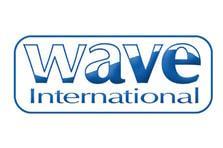For ports, marinas and terminals, accidental oil and diesel spills are an unfortunate but frequent reality. Responding quickly is essential, not only to protect sensitive waters but also to maintain smooth operations

Traditional cleanup methods, involving absorbent pads and booms can be slow, wasteful and often leave behind the smallest but most damaging pollutants.
But Wave International Limited has developed what it calls a smarter solution. The Wavecleaner VAC is a portable spill-response unit designed to deliver fast, efficient and sustainable cleanup, for marinas, docks, ports and inland environments.
“The Wavecleaner VAC was created in direct response to requests from marina operators, dockyards, river authorities, and emergency-response teams,” explains Mark Luffingham, sales and marketing manager at Wave International.
“Users wanted a portable, rapid-response system capable of addressing accidental oil, diesel and hydrocarbon spills on water.”
Rapid response, minimal disruption
One of the main challenges for smaller ports and terminals is finding equipment that can be deployed quickly without requiring large teams or complex logistics. The Wavecleaner VAC addresses this head-on.

Housed in a durable cage and powered by a rechargeable 12-volt battery, the system resembles a small generator with a floating skimmer head. It can be wheeled on a trolley or loaded into a RIB, enabling single-operator use in confined or hard-to-reach areas.
Despite its size, it delivers impressive performance: Around 22 litres per minute, a three-metre vertical lift and up to 40 metres head.
“The VAC is designed for speed and simplicity,” says Mr Luffingham. “Even small sites can respond swiftly to spills, reducing environmental impact and avoiding disruption to port operations.”
On-site filtration
Perhaps the most significant advantage of the Wavecleaner VAC is its integrated filtration capability.
Polluted water passes through a sediment strainer and dual Lloyd’s Register Type-approved Wavestream System 2 filters, removing oils, fuel and all hydrocarbons to ≤ 5 ppm meeting legal discharge requirements while also removing suspended solids, microplastics and microfibres.
This allows operators to discharge cleaned water straight back into the harbour or river, avoiding the costs, delays and emissions associated with transporting contaminated waste offsite.
“The on-site filtration to legal standards is a real game-changer,” Mr Luffingham explains.
“It eliminates disposal fees and logistics, while cutting the carbon footprint that comes with moving waste around.”
Flexible application
While originally designed for coastal and dockside environments, the Wavecleaner VAC is proving equally effective inland.
“The surface water is sucked in through the integrated sediment strainer in the uniquely designed skimmer head so potential clogging from large debris is prevented, which in turn reduces both maintenance cost and downtime during critical operations,” says Mr Luffingham. “Because it’s portable, it can even be deployed in areas with limited access, making it a versatile tool for inland businesses.”
Pollution control
For ports and terminals, the VAC provides a critical first line of defence within a broader pollution control framework.
It complements larger infrastructure such as booms and oil-water separators by offering point-of-source filtration right at the site of a spill.
“The VAC helps ports demonstrate environmental stewardship,” says Mr Luffingham.
“It shows regulators, customers and local communities that pollution prevention is taken seriously. And by supporting compliance, it helps operators avoid fines and reputational damage.”
Ultimately, the Wavecleaner VAC is about combining efficiency with sustainability.
By reducing response times, it limits environmental damage. By filtering water on-site, it avoids costly disposal logistics and their associated emissions. And by capturing microplastics and suspended solids, it addresses long-term water quality, not just immediate surface spills.
“This is not just about compliance, it’s about future-proofing,” Mr Luffingham concludes.
“Ports and terminals that adopt cleaner, more efficient technologies now are investing in their sustainability and operational resilience.”














